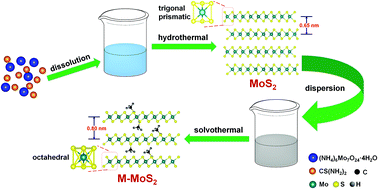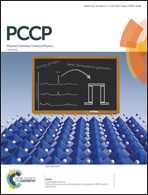Methyl-functionalized MoS2 nanosheets with reduced lattice breathing for enhanced pseudocapacitive sodium storage†
Abstract
Sodium ion batteries (SIBs) possess the potential to realize low-cost and large-scale energy storage due to the abundance of sodium. However, the large ionic radius of sodium often leads to sluggish kinetics and large volume change, limiting the further development of SIBs. Layered MoS2, with a large interlayer distance, is a promising intercalation anode material for SIBs. In this work, we report the synthesis of methyl-functionalized MoS2 (M-MoS2) nanosheets through a facile second solvothermal method. During the second solvothermal treatment, the pristine MoS2 is mostly converted from the 2H to 1T phase and the interlayer distance is expanded from 0.65 to 0.80 nm. When evaluated as the anode for SIBs, the M-MoS2 exhibits superior cycling stability and rate capability. Kinetic analysis shows that the capacity is mainly contributed from a pseudocapacitive process. Ex situ XRD shows that the M-MoS2 exhibits inhibited lattice breathing and thus reduced volume change during cycling. This work demonstrates that the M-MoS2 is a promising candidate for pseudocapacitive sodium storage.



 Please wait while we load your content...
Please wait while we load your content...